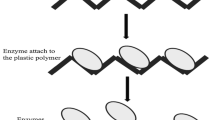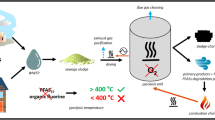Abstract.
Diphenylamine (DPA) was cometabolically degraded in anoxic sediment-water batch enrichments and in cultures of newly isolated sulfate-reducing bacteria. In gas chromatography–mass spectrometry (GC-MS) measurements, aniline was identified as a major breakdown product of the diphenylamine structure. After its identification, aniline was quantified by reversed phase high pressure liquid chromatography (HPLC). The fate of the other carbon ring system remained unclear, because benzene (as a product of reductive cleavage), phenol (as a product of hydrolytic cleavage), and/or other ring cleavage products of diphenylamine were not observed in our experiments with the methods employed.
Similar content being viewed by others
Author information
Authors and Affiliations
Additional information
Received: 20 May 1997 / Accepted: 25 June 1997
Rights and permissions
About this article
Cite this article
Drzyzga, O., Blotevogel, KH. Microbial Degradation of Diphenylamine Under Anoxic Conditions. Curr Microbiol 35, 343–347 (1997). https://doi.org/10.1007/PL00006754
Issue Date:
DOI: https://doi.org/10.1007/PL00006754




